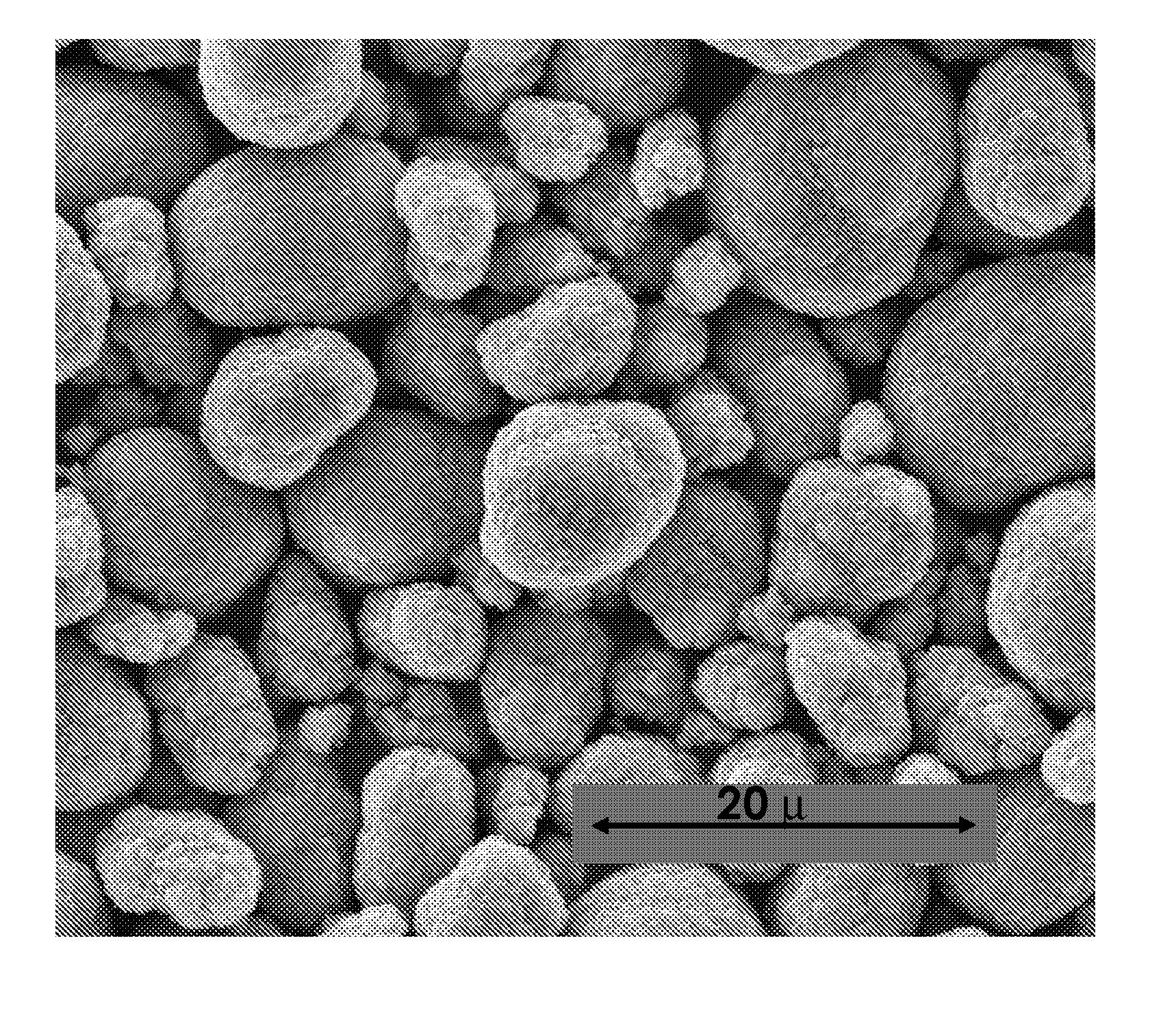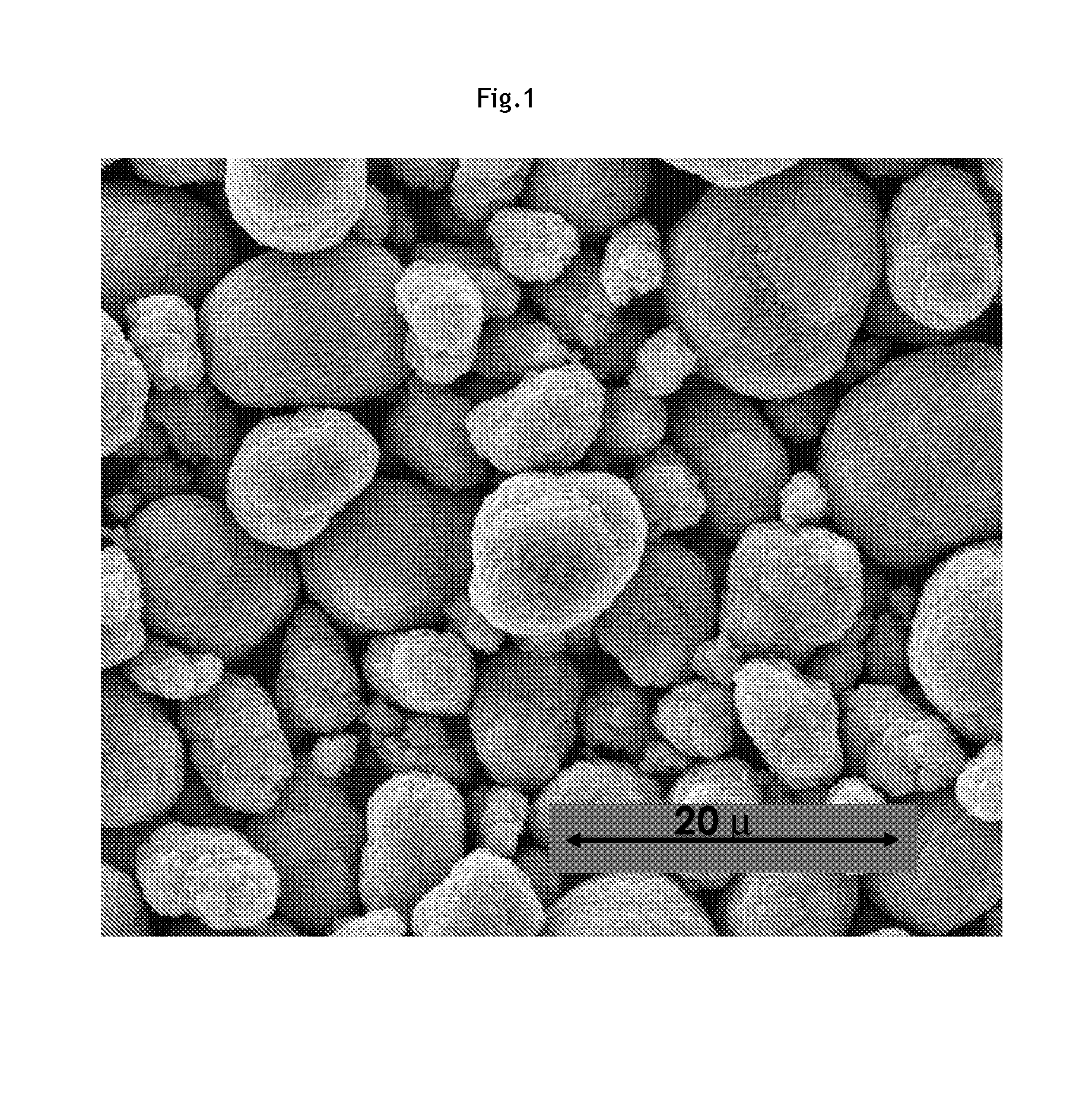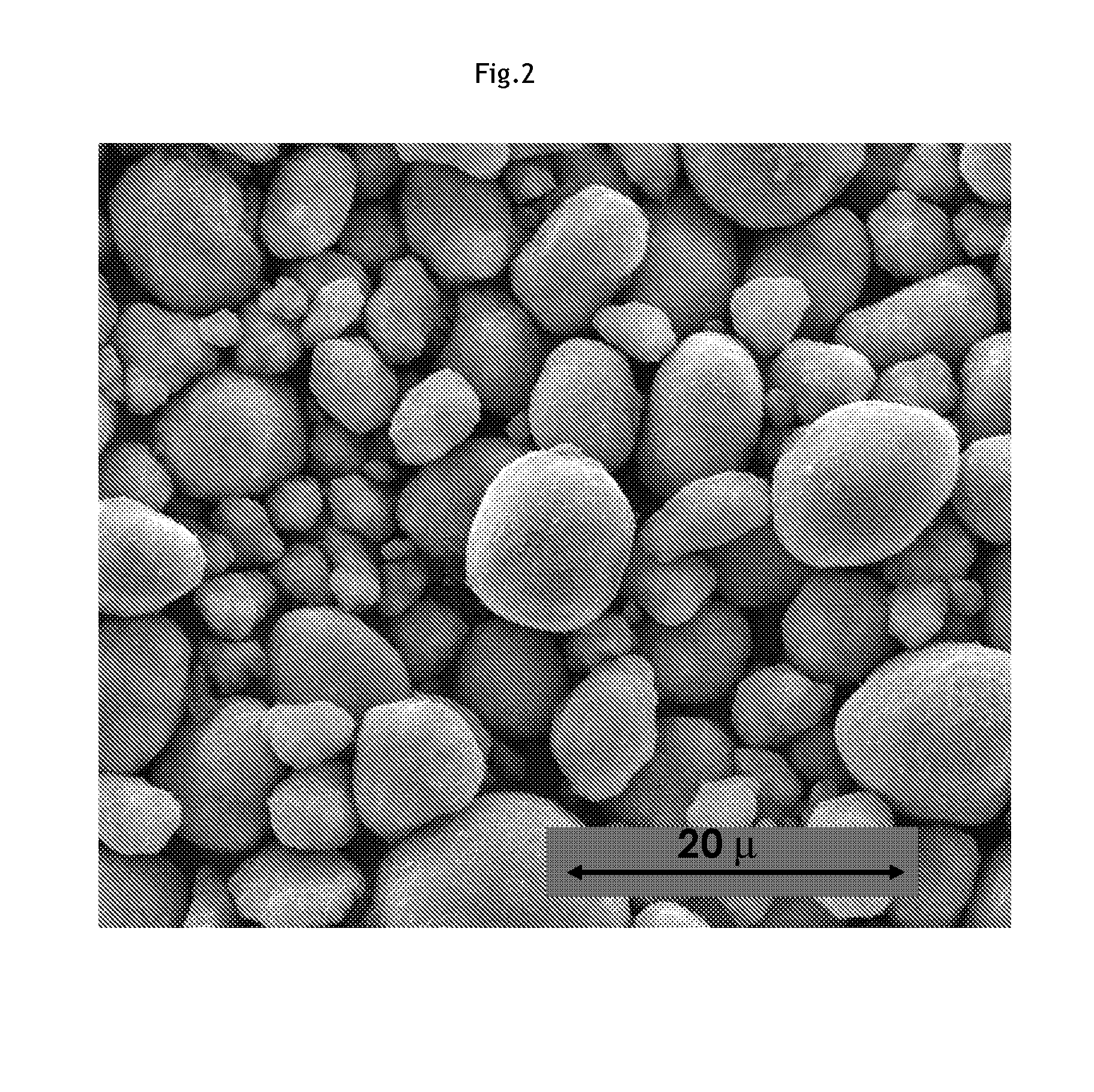Alumina Dry-Coated Cathode Material Precursors
a cathode material and precursor technology, applied in the field of precursor compounds of cathode materials, can solve the problems of thermal instability in organic electrolytes, cell explosion, high cost of licoosub>2/sub>-based cathode materials, etc., and achieve good safety, increase particle size, and reduce particle size
- Summary
- Abstract
- Description
- Claims
- Application Information
AI Technical Summary
Benefits of technology
Problems solved by technology
Method used
Image
Examples
example 1
[0033]1 kg of a Ni—Mn—Co precursor with composition MOOH, M=Ni0.46Mn0.39Co0.15 is filled into a mixer (for example a 2L Henschel type Mixer) and 25.5 g of fumed alumina (Al2O3) nano-powder is added. During mixing for 30 min at 1000 rpm the fumed alumina slowly fades out of sight and a coated MOOH powder, looking very much like the initial powder (black color, small volume) results. With this ratio of quantities precursor / fumed alumina a doping level of aluminum of 5 mol % is achieved.
[0034]Then another 25.5 g of fumed alumina is added, and the mixing is continued for 30 min at 1000 rpm, resulting again in a black powder with small volume. No traces, visible to the naked eye, of the fumed alumina remains after the two coating procedures. Obviously, the all or nearly all of the fumed alumina is utilized to cover the precursor particles with a thin, transparent, relatively dense film. By adding this second coating procedure, a doping level of aluminum of 10 mol % is achieved.
[0035]Cros...
example 2
[0036]In this example, performed according to the general outline of Example 1, a Ni—Co compound with composition M(OH)2 (M=Ni0.8Co0.15) is coated with nanometric fumed alumina powder. Two sets of coated samples are prepared. The first set of the coated samples has a doping level of aluminum of 5 mol % (5 mol % Al+0.95 mol % M) after performing only one coating procedure. The second set of samples had a doping level of aluminum of 15 mol % after performing three consecutive coating procedures, adding each time 5 mol % of the fumed alumina per 1 mol of the transition metal.
[0037]X-ray diffraction patterns reveal that the aluminum coating layer is not amorphous. Thus, the crystal structure of the fumed alumina is maintained during the coating procedures and the core of the M(OH)2 precursor particles is surrounded by a coating layer or shell containing crystalline alumina nano particles.
[0038]Referring to FIGS. 1 and 2, SEM (scanning electron microscope) micrographs of a MOOH precursor...
example 3
[0045]The MOOH precursor (M=Ni0.46Mn0.39Co0.15) of Example 1 is used as primary core compound. The alumina dry coating as described in Example 1 is applied to this compound. As a result of the coating secondary precursors are prepared. The total aluminum content ranges from 0, 1.5, 3, 5 and 10 mol % , respectively for 1 mol Ni—Mn—Co.
[0046]For each of the secondary precursors the blend ratio and firing temperature is optimized. As optimized conditions T=990° C. and a lithium to metal (Li:M, M=Ni+Mn+Co+Al) stoichiometric blend ratio Li:M=1.088 is chosen.
[0047]Testing focuses on electrochemical performance and structure:
[0048]a) Electrochemical performance: The capacity decreases continuously with Al doping level. The first charge capacity decreases by 0.5% per 1 mol % Aluminum doping. The reversible capacity decreases by about 1% per 1 mol % Al doping.
[0049]Rate performance decreases modestly from about 88 to 85% (capacity at 2C relative to capacity at 0.1C).
[0050]Cycle stability at 4...
PUM
| Property | Measurement | Unit |
|---|---|---|
| Temperature | aaaaa | aaaaa |
| Temperature | aaaaa | aaaaa |
| Angular velocity | aaaaa | aaaaa |
Abstract
Description
Claims
Application Information
 Login to View More
Login to View More - R&D
- Intellectual Property
- Life Sciences
- Materials
- Tech Scout
- Unparalleled Data Quality
- Higher Quality Content
- 60% Fewer Hallucinations
Browse by: Latest US Patents, China's latest patents, Technical Efficacy Thesaurus, Application Domain, Technology Topic, Popular Technical Reports.
© 2025 PatSnap. All rights reserved.Legal|Privacy policy|Modern Slavery Act Transparency Statement|Sitemap|About US| Contact US: help@patsnap.com



